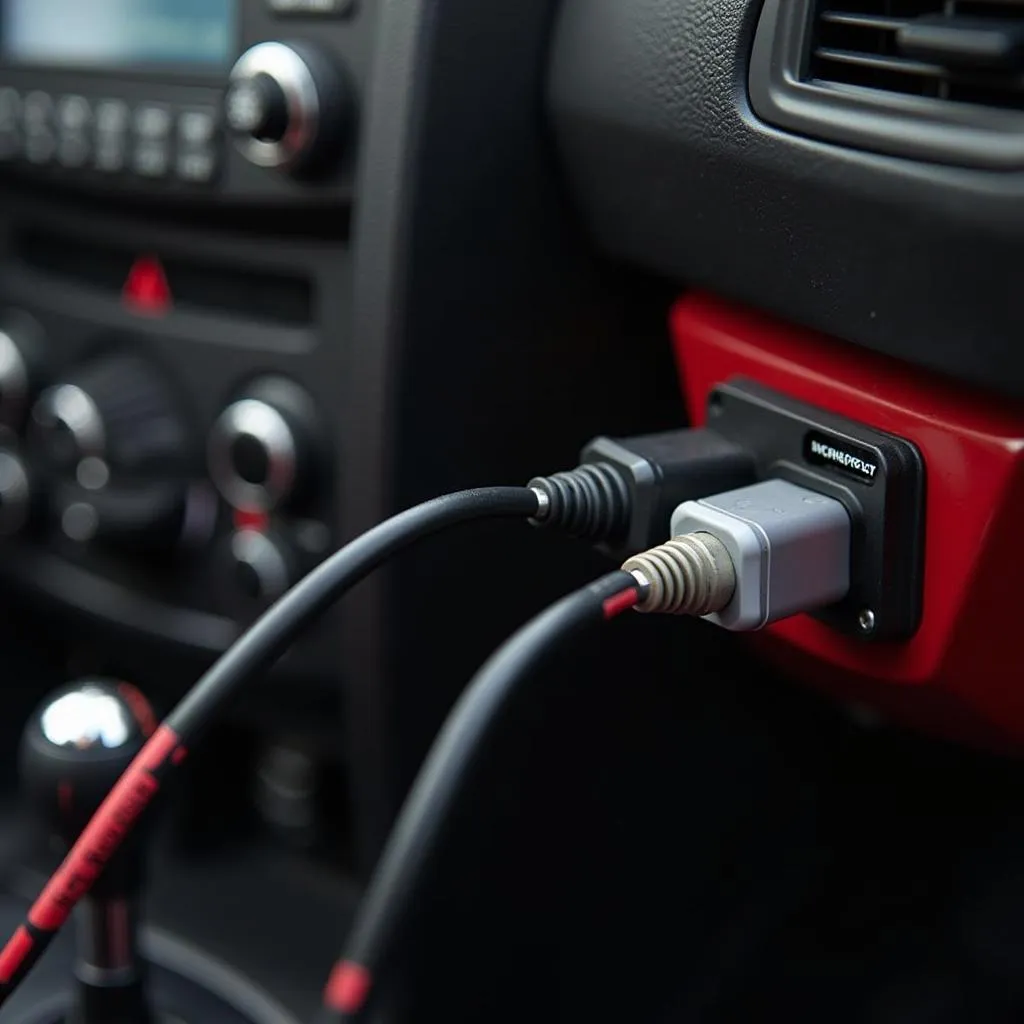You’re ready to unleash your car’s true potential with a Cobb Accessport, but there’s a problem—it’s not detecting your OBD2 port during the recovery process. This issue can be frustrating, but don’t worry, you’re not alone. This comprehensive guide will walk you through the common reasons behind this problem and provide you with effective solutions to get your Accessport up and running.
Understanding the Issue: Accessport and OBD2 Communication
Before we dive into troubleshooting, it’s essential to understand how the Cobb Accessport interacts with your car’s OBD2 port. The Accessport is a powerful engine tuning device that modifies your car’s Engine Control Unit (ECU) to optimize performance. It communicates with the ECU through the OBD2 port, a standardized interface found in most modern vehicles. During the recovery process, the Accessport needs to establish a stable connection with the OBD2 port to access and modify the ECU’s data.
Why is My Cobb Accessport Not Detecting OBD2 When Trying to Recover?
Several factors can lead to the “Cobb Accessport not detecting OBD2 when trying to recover” issue. Here’s a breakdown of the most common culprits:
- OBD2 Port Issues: The most straightforward explanation is a problem with the OBD2 port itself. This could be due to:
- Loose Connection: Ensure the Accessport is securely plugged into the OBD2 port.
- Damaged OBD2 Port: Inspect the port for bent or broken pins.
- Fuse Problem: A blown fuse related to the OBD2 port can disrupt communication.
- Accessport Firmware or Software Issues: Outdated or corrupted firmware on the Accessport or outdated software on your computer can cause communication errors.
- Vehicle Battery Issues: A weak or unstable battery can interfere with the OBD2 communication, especially during the recovery process, which demands more power.
- ECU Compatibility: Ensure that your Cobb Accessport is compatible with your vehicle’s specific make, model, and year. Using an incompatible Accessport can lead to communication failures.
- Aftermarket Electronics Interference: In some cases, other aftermarket electronics installed in your vehicle might interfere with the OBD2 communication.
Troubleshooting Steps: Getting Your Accessport Back on Track
Now that you have a better understanding of the potential causes, let’s explore the troubleshooting steps:
1. Check the Basics First:
- Secure Connections: Make sure the Accessport is firmly plugged into the OBD2 port and the connection is not loose.
- Inspect the OBD2 Port: Visually examine the port for any visible damage, such as bent or broken pins. If you notice any damage, consult a mechanic for repair or replacement.
- Check the Fuse: Refer to your vehicle’s owner’s manual to locate the fuse box and identify the fuse associated with the OBD2 port. Check if the fuse is blown and replace it if necessary.
2. Address Potential Battery Issues:
- Test Your Battery: Use a multimeter to test your car battery’s voltage. A fully charged battery should read around 12.6 volts. If the voltage is significantly lower, charge the battery fully.
- Try a Jump Start: If you suspect a weak battery, try jump-starting your car to provide a stable power supply during the recovery process.
3. Update Your Accessport and Software:
- Update Accessport Firmware: Connect your Accessport to your computer and visit the Cobb Tuning website to download and install the latest firmware version.
- Check for Software Updates: Ensure that the Accessport Manager software on your computer is up to date.
4. Address Potential ECU Compatibility Issues:
- Verify Compatibility: Double-check that your Cobb Accessport model is compatible with your car’s exact make, model, and year. Refer to the Cobb Tuning website for compatibility information.
5. Isolate Aftermarket Electronics Interference:
- Disconnect Other Devices: Temporarily disconnect any non-essential aftermarket electronics connected to your vehicle’s electrical system, such as aftermarket stereos, amplifiers, or alarm systems. Try the recovery process again. If it works, you’ve identified the source of the interference.
6. Seek Professional Help:
If none of the above steps resolve the issue, it’s recommended to reach out to Cobb Tuning’s customer support or consult a qualified mechanic experienced with aftermarket tuning devices for further assistance.
Conclusion
Encountering the “Cobb Accessport not detecting OBD2 when trying to recover” issue can be a roadblock to unlocking your car’s performance potential. However, by systematically understanding the potential causes and following these troubleshooting steps, you can often diagnose and resolve the problem yourself. Remember to prioritize safety and consult with professionals when needed to ensure a successful and enjoyable tuning experience.
FAQs
1. Can I damage my ECU if the Accessport fails to detect the OBD2 port during recovery?
It’s unlikely to damage your ECU if the Accessport doesn’t detect the OBD2 port. The recovery process is designed to be safe and prevent accidental data corruption. However, it’s crucial to use a compatible Accessport and ensure a stable power supply to minimize risks.
2. What should I do if I’ve tried all the troubleshooting steps and the Accessport is still not detecting the OBD2 port?
If you’ve exhausted all troubleshooting options, the next best step is to contact Cobb Tuning’s customer support or a reputable mechanic specializing in aftermarket tuning for expert assistance.
Need More Help?
Having trouble with your Cobb Accessport or need expert advice? We’re here to help! Contact our 24/7 support team via WhatsApp: +1(641)206-8880, or Email: [email protected] for immediate assistance.


